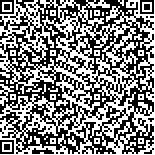| 引用本文: | 王季,索来春,付宜利.电解质等离子抛光液中硫酸铵含量的检测方法[J].材料科学与工艺,2014,22(2):30-35.DOI:10.11951/j.issn.1005-0299.20140206. |
| WANG Ji,SUO Laichun,FU Yili.Detecting the mass fraction of ammonium sulfate in polishing solution in electrolysis and plasma polishing[J].Materials Science and Technology,2014,22(2):30-35.DOI:10.11951/j.issn.1005-0299.20140206. |
|
| 摘要: |
| 电解质等离子抛光过程中受抛光产生的金属微粒的干扰,无法使用电导法对抛光液中硫酸铵的含量进行检测,为了解决这一问题,基于实验提出了两种确定硫酸铵含量(质量分数)的方法.一种方法是利用抛光液中硫酸铵的含量低于2.5%以后抛光的电流密度会明显下降的现象,定时检测抛光过程中电流值和抛光液温度,以确定是否需要补充硫酸铵.另一种方法是通过实验得到一定抛光液温度下抛光量与硫酸铵消耗量的关系,再在抛光过程中记录抛光量计算抛光液中硫酸铵含量的方法.研究发现,前一种方法应用更为简便,适用于一般工业生产;后一种方法适用于对抛光效果要求更高的加工.经实验验证两种方法均具有可行性. |
| 关键词: 电解质等离子抛光 硫酸铵 质量分数 电流密度 抛光量 |
| DOI:10.11951/j.issn.1005-0299.20140206 |
| 分类号:TG175 |
| 基金项目:国际科技合作项目 (2009DFR70110). |
|
| Detecting the mass fraction of ammonium sulfate in polishing solution in electrolysis and plasma polishing |
|
WANG Ji1,2, SUO Laichun1, FU Yili1
|
|
(1. School of Mechatronics Engineering, Harbin Institute of Technology, Harbin 150001, China; 2. Engineering Technology Center, Jiangsu Xuzhou Construction Machinery Research Institute, Xuzhou 221004, China)
|
| Abstract: |
| Conductometry is not available in detecting the mass fraction of ammonium sulfate in polishing solution in electrolysis and plasma polishing because of the interference of the metallic particles produced in the polishing. To solve the problem, two methods based on experiment to detect the mass fraction of ammonium sulfate are proposed. One method is to measure the current and temperature of the polishing solution to determine whether ammonium sulfate need to be added, as the electric current density drops significantly when the mass fraction is less than 2.5%. The other method is to know correlations between the polishing quantity and the consumption of ammonium sulfate at a certain temperature of the polishing solution by experiments, then the polishing quantity is recorded to work out the mass fraction of ammonium sulfate. The first method is simple to operate, and thus is suitable for general industrial production. The second method applies to the process requiring better polishing effects. The two methods are proved to be effective and feasible. |
| Key words: electrolysis and plasma polishing ammonium sulfate mass fraction electric current density polishing quantity |






